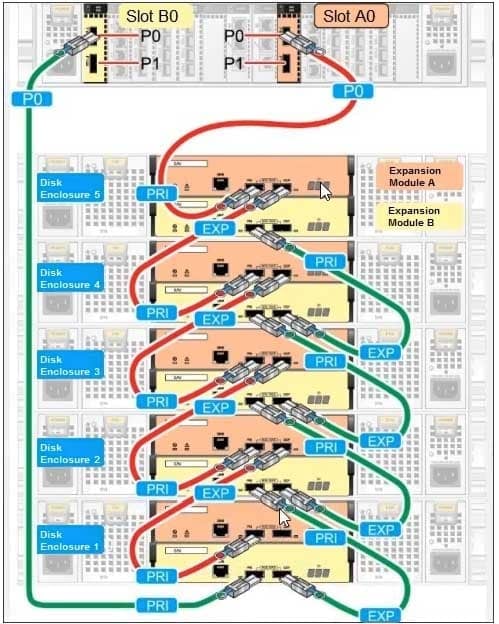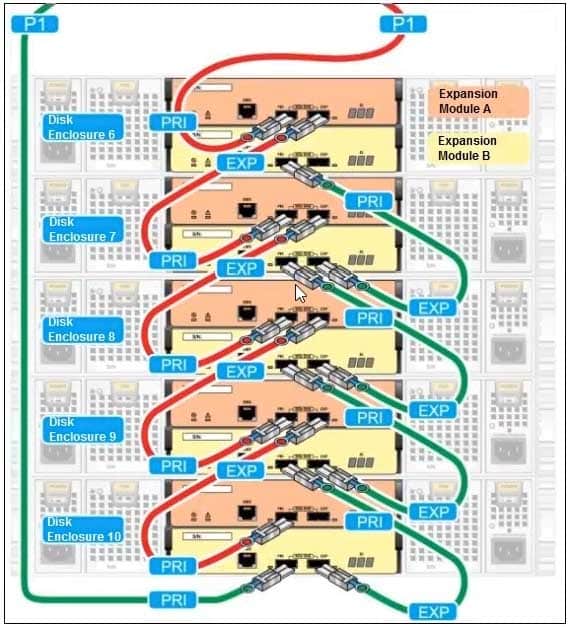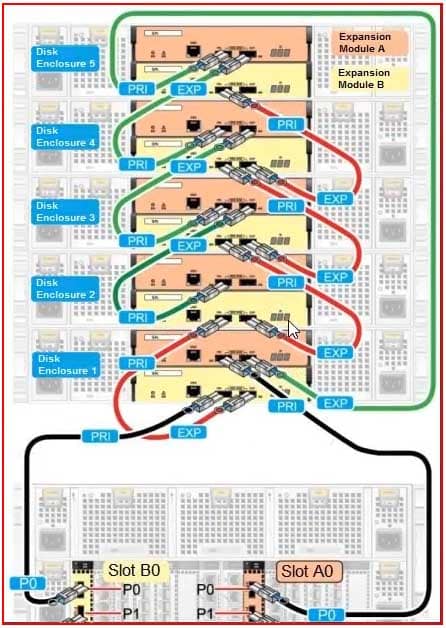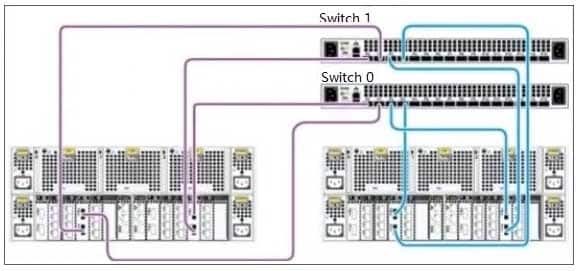H13-629 : HCIE-Storage : Part 17
-
The Huawei OceanStor storage system uses asynchronous multi-time cache for asynchronous remote replication to make the remote asynchronous RPO index of the LUN reach the second level.
- True
- False
-
In VSphere 5.0 and later, View Storage Accelerate (VSA) caches virtual machine disk data to EXSi hosts. It uses the content-based read cache (CBRC) in EXSi hosts, which no longer reads the entire operating system from the storage system. It reads the regular data block from the cache, thereby enhancing the performance of the virtual host.
- True
- False
-
A file system in a clustered NAS system performs heartbeat synchronization between nodes. When the heartbeat is interrupted, the N8000 cluster is split into multiple small groups, resulting in data loss. The N8000 provides a fencing function to avoid the occurrence of the split-brain issue. Which of the following descriptions of the role of fencing correct?
- Monitor GAB and check for changes in cluster members
- Guarantee a single view of the members of the cluster
- In the absence of a single cluster control, to prevent multiple nodes with Volume Manager to access shared storage
- cluster abnormal recovery automatically master node
-
SmartVirtualization is an important value-added feature of Huawei OceanStor V3 storage system. Which of the following is correct about its principle and related concepts? (multiple choice)
- The local storage system does not occupy the local storage system when using LUNs in heterogeneous storage systems
- For external LUNs, the local storage system can set value-added functions such as remote replication, snapshots, etc.
- smartVirtualization uses multipathing software to connect heterogeneous storage in a multipath-redundant manner
- smartVirtualization Dictate write data write efficiency is higher than the write-back efficiency
-
For Oracle database to do online RMAN physical backups, you need oracle to run in _____ mode; To restore data files, you need to start the Oracle____(Fill in the blanks multiple choice)
- Non-archiving
- Archiving
- nomount
- mount
-
Which of the following describes Youtube, Facebook and other content warehouse sites data storage? (multiple choice)
- unstructured data high proportion
- large amount of data, rapid growth
- A variety of data types
- data unit GB value of high density
-
Which of the following is correct regarding the vmware link cloning function?
- Linking Cloned VMs behave just like cloned VMs
- Linked Clone A virtual machine is a complete clone of a cloned virtual machine
- Linked Clone The virtual machine is a standalone virtual machine
- Linked clone virtual machines take up less space than cloned virtual machines
-
Which of the following are the basic principles of storage troubleshooting? (multiple choice)
- Locate the exterior first, then the interior
- First perform an alarm analysis, then use the replacement method
- First find the high-level alarm, then the low-level alarm
- Find the common first alarm, after the individual alarm
-
Which of the following is correct regarding the ext3 file system fault repair?
- Use the mount command to view the file system mount status is read-only
- mount the damaged file system, the direct implementation of fsck to repair
- should not be arbitrary on the normal operation of the fsck file system
- By collecting, var / log / message host log information to locate file system failure
-
Which statements are true about Huawei OceanStor V3 HyperMirror feature? (Multiple Choice)
- Create a mirror LUN for a common LUN. Due to internal information exchange, the LUN ID for hosts’ read and write I/Os changes based on the information exchange result.
- A LUN stores 2 GB of data. Create a mirror LUN for this LUN. During the creation, the system automatically generates a copy. The total data amount of the copy and mirror LUN is 4 GB.
- HyperMirror can be configured for external LUNs, and external LUNs can be configured as HyperMirror copies.
- When configuring HyperMirror, its copies must come from different disk domains.
-
Create LUNs on an OceanStor V3 storage system. Set the initial space allocation policy to be automatic. Create LUN 1, and 80% of its space comes from the capacity tier. Create LUN 2 in the same storage pool. It can be concluded that 0% of LUN 2’s space comes from the performance tier.
- TRUE
- FALSE
-
Enable SmartMigration on OceanStor V3 and start a migration task with SmartMigration. Before migration, suppose the LUN ID and the data volume ID of the source LUN are 1 and 2 respectively while the LUN ID and the data volume ID of the destination LUN are 3 and 4 respectively, what are they after migration?
- Source LUN: 1 and 3
Destination LUN: 2 and 4 - Source LUN: 1 and 4
Destination LUN: 3 and 2 - Source LUN: 3 and 1
Destination LUN: 4 and 2 - Source LUN: 2 and 4
Destination LUN: 1 and 3
- Source LUN: 1 and 3
-
In terms of using the file system snapshot feature of OceanStor V3, a user who wants to access snapshot data must mount the file system snapshot.
- TRUE
- FALSE
-
A customer plans to deploy three application systems on an OceanStor V3 storage system. The first is a service system that carries Oracle databases, and it requires high random read and write performance. The second is a mail system used to process daily mails. The third is a video system used to archive video files. Which SmartTier policy settings are correct for creating LUNs for each application system?
(Multiple Choice)
- Service system:
1. Initial capacity allocation: Allocate from the performance layer first
2. Data relocation policy: Lowest relocation - Mail system:
1. Initial capacity allocation: Automatic allocation
2. Data relocation policy: Automatic relocation - Video system:
1. Initial capacity allocation: Allocate from the capacity layer first
2. Data relocation policy: Automatic relocation - Video system:
1. Initial capacity allocation: Allocate from the capacity layer first
2. Data relocation policy: Lowest relocation
- Service system:
-
A customer requires 60 TB of storage space available on an OceanStor V3 storage system to store service data. How many disks will be used if the customer installs 600 GB 15K RPM SAS disks and creates a pool with RAID 5 (8D+1P) using a low hot spare policy? (Select the closest number without considering the required data protection space.)
- 100
- 120
- 140
- 180
-
Which statement is true about RAID 2.0+?
- Chunks in a CKG may come from different types of disks.
- A LUN consists of extents or grains.
- Chunks in a CKG may come from the same disk.
- Chunks in a CKG may come from different storage pools.
-
OceanStor 18500 uses RAID 2.0+ virtualization architecture. Which statement is false about planning and configuring storage with RAID 2.0+?
- Both thick and thin LUNs can be created in the same storage pool.
- If the performance tier of a storage pool uses the 8D+1P RAID policy, the owning disk domain of the storage pool must have at least 9 SAS disks.
- The hot spare space of a storage pool comes from each member disk of the storage pool.
- A storage pool can have three storage tiers, and each tier can have more than one RAID policy.
-
Which network connection is wrong for an OceanStor 18000 expansion network?
-
When cache mirroring is enabled for the two controllers of an OceanStor V3 storage system, the two controllers have identical cache data and the failure of either controller does not affect system services.
- TRUE
- FALSE
-
Which statements are false about the file system quota feature of OceanStor V3? (Multiple Choice)
- A quota tree can be shared using a protocol. In addition, a quota tree that is being shared cannot be renamed or deleted.
- You can move files (NFS protocol) or cut files (CIFS protocol) across quota trees.
- A hard link cannot be established between two different quota trees.
- An administrator can delete non-empty quota trees through CLI or GUI.
Subscribe
0 Comments
Newest



